Ah, the humble beet (Beta vulgaris)! What a marvel of nature! It’s hard to know where to begin with such a versatile and delicious root vegetable. Beets come in a rainbow of colors, from deep ruby red to golden yellow to candy-striped pink and white. They’re like jewels of the earth, waiting to be discovered and savored.
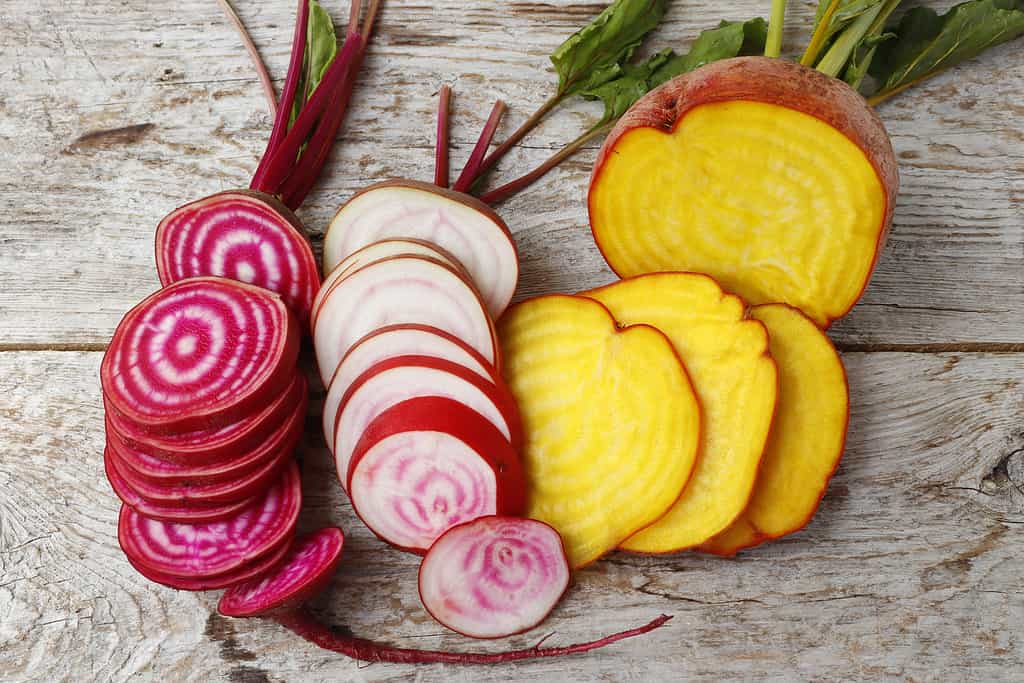
Beets come in a rainbow of colors.
©Olga Bondarenko/Shutterstock.com
Beets are Nutritious
But it’s not just their beauty that makes beets so amazing. Oh no! They’re packed with nutrients that are essential to a healthy body. Beets are a great source of fiber, folate, potassium, and vitamin C. Eating beets regularly will help boost your immune system, support healthy digestion, and even lower your blood pressure!
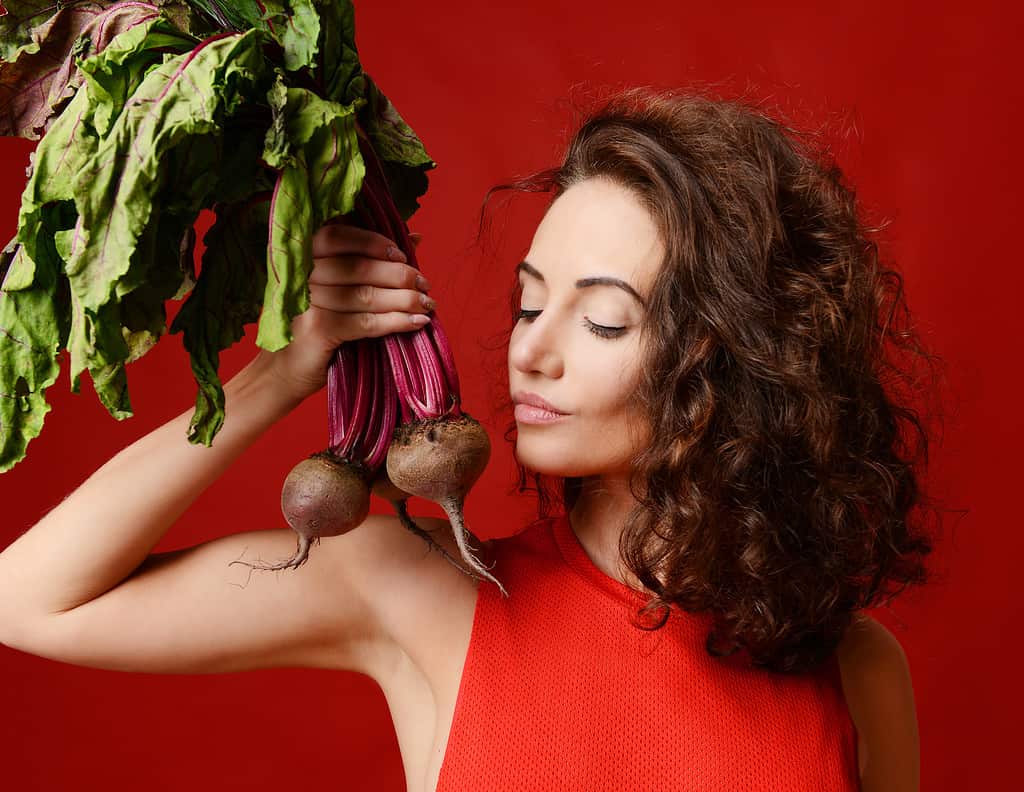
Beets are packed with nutrients that are essential to a healthy body.
©Dmitry Lobanov/Shutterstock.com
How Many Beets Should I Eat to Lower Blood Pressure?

The nitrates in beets get converted by the body into nitric oxide, which relaxes blood vessels.
©Denis Shitikoff/Shutterstock.com
To make the most of the healing properties of beets, you should drink at least one cup of beetroot juice daily, or consume beets, for at least one month. It has been shown that nitrates contained in this root vegetable are then converted by the body into nitric oxide. Because nitric acid relaxes blood vessels, it is able to lower blood pressure. As beetroot is shown to have chemopreventive properties, it has even been shown to protect against certain types of tumors and may be a potential benefit to cancer.
Beets are Flavorful
And let’s not forget about the flavor! Beets are earthy and sweet, with a slight hint of bitterness that gives them depth and complexity. You can roast them, boil them, pickle them, or even eat them raw. They’re delicious in salads, soups, stews, and sandwiches. And beet juice is a vibrant, refreshing elixir that can give you an energy boost that makes you feel like a superhero.

Beet juice is a vibrant, refreshing elixir that can give you an energy boost that makes you feel like a superhero.
©Maridav/Shutterstock.com
Beets are East to Grow
But wait! There’s even more good news about beets: Beets are easy to grow! They are a cool-weather crop that is planted in both the spring and fall, depending on the climate/growing zone. Beets prefer well-draining soil that is rich in organic matter, and they need consistent moisture to thrive. Growing beets from seed takes 50-70 days. Beets can be sensitive to fluctuations in soil moisture and temperature, so it’s important to keep them consistently moist and avoid letting the soil dry out or become too hot. Keep reading for your complete guide to growing beets!

Beets are easy to grow!
©Joshua Resnick/Shutterstock.com
How to Grow Beets: Step-By-Step
Location, Location, Location!
If you love fresh, healthful vegetables, adding beets to your garden spot is a must! For the most successful yield, after procuring beet seeds, the first step is choosing the right location. Beets need full sun and well-draining soil with a pH level of approximately 6.5. You can learn how to test your soil here. Choose a spot that gets at least six hours of sunlight per day.
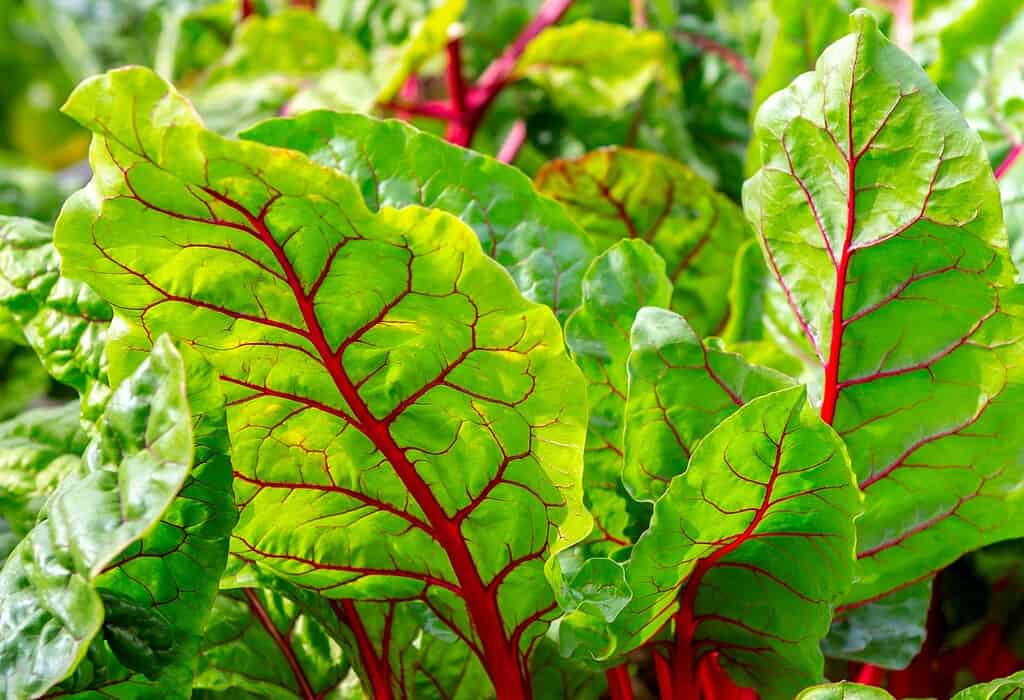
Beets need full sun.
©romiri/Shutterstock.com
Preparing the soil
Soil preparation is an invaluable step on your way to a bountiful harvest. Start by loosening the soil with a garden fork and removing any weeds, rocks, or debris. Mix in compost or composted manure to enrich the soil and improve drainage. Beets do not grow well in acidic soil, which is considered any ph level below 6. If your soil tests on the acidic side, adding lime will boost the ph level and the alkalinity. Lime is available at most garden centers. Follow the directions on the bag for the best results.
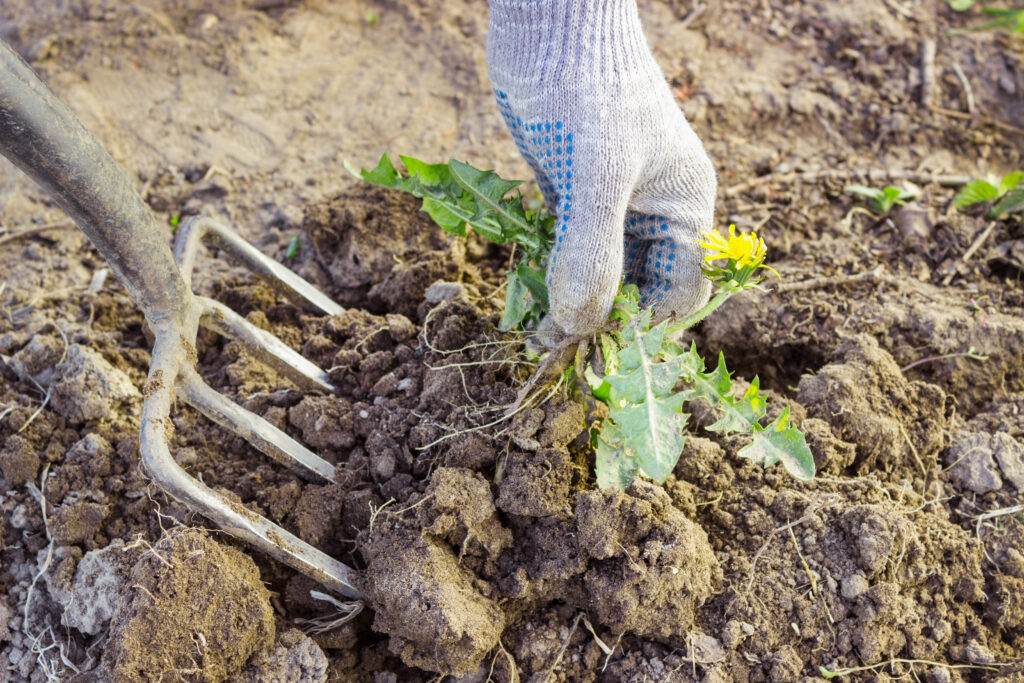
Before planting, loosen the soil with a garden fork and remove any weeds, rocks, or
debris
.
©Sever180/Shutterstock.com
Sowing the Seeds
Once the soil has been prepared, it’s time to sow the seeds. Beet seeds can be sown directly in the soil. Sowing seeds is the process of placing the seeds in the ground, typically by scattering them over a prepared bed. The seeds are then lightly covered with soil and watered. Sowing can be done by hand. This method is typically used for small seeds, such as lettuce, carrots, radishes, and beets, that require planting at a shallow depth. Broadcast the beet seed in the prepared bed, and cover with no more than 1/2 inch of soil. Once seedlings begin to appear and develop a few sets of leaves, thin the seedlings to between 3-4 inches apart.
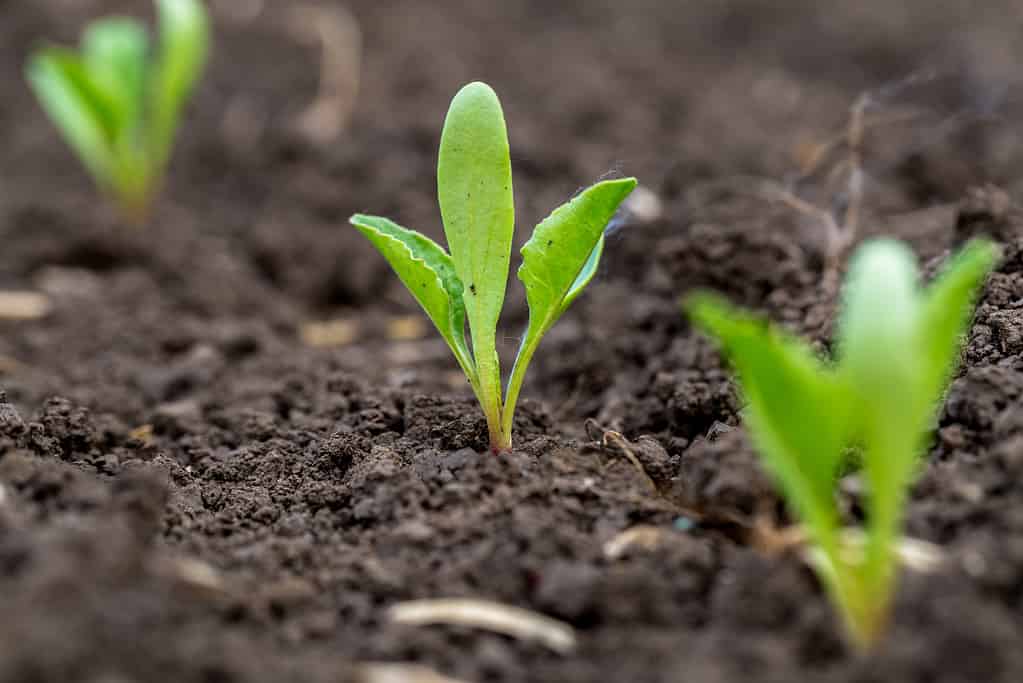
Once seedlings begin to appear and develop a few sets of leaves, thin the seedlings to between 3-4 inches apart.
©S.O.E/Shutterstock.com
How to Grow Beets: Watering/Waiting/Harvesting
Once the beet plants have emerged and been thinned, all that’s left to do is water and wait! Beets need consistent moisture to grow properly. Water them deeply once or twice a week, depending on the weather. Don’t let the soil dry out completely or become waterlogged. Beets are ready to harvest when the roots are about two to three inches in diameter, approximately 50 to 70 days after planting. Use a garden fork to gently lift the beets out of the ground. Cut off the greens and wash the roots thoroughly. Voila! Now, the only thing left to do is eat them!
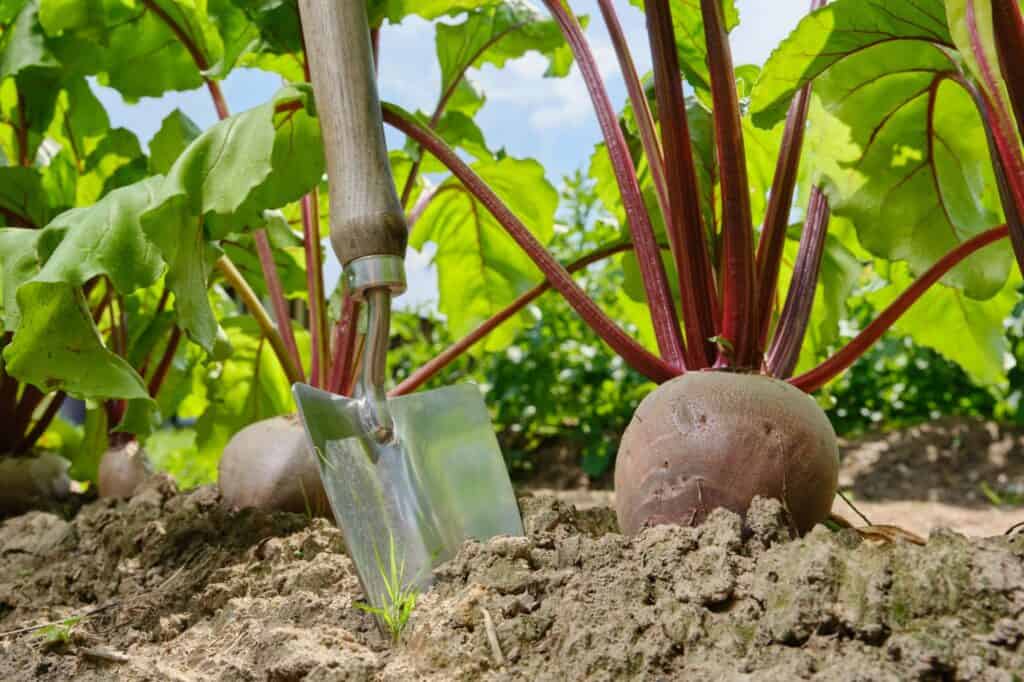
Beets are ready to harvest when the roots are about two to three inches in diameter.
©Vlad Antonov/Shutterstock.com
How to Grow Beets: When to Cultivate
Depending on where you call home, the best time to sow your beet seed will differ. Beets are a cool-season crop and require cool temperatures between 50-65°F (10-18°C) to grow well. In USDA Hardiness Zones 7-10, which experience mild winters and early springs, beets can be sown in the late winter/early spring and again in the fall. The intense summer heat in these zones is not conducive to beet growth. In Zones 2-8, it’s only possible to grow beets once a year because these zones have shorter growing seasons. Beets are typically planted in the mid-to-late spring and harvested in the summer or early fall, In these colder zones.
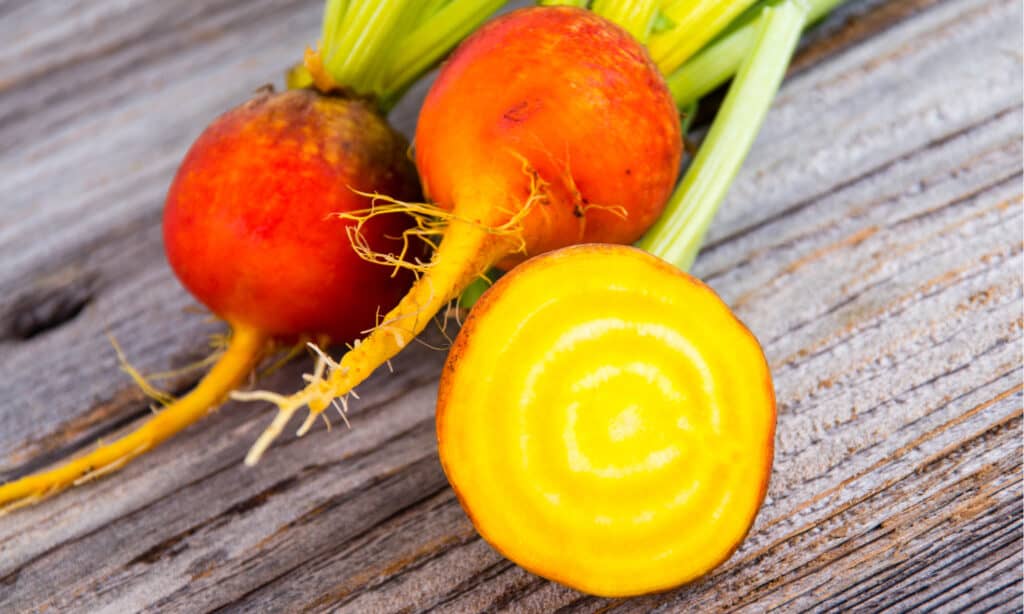
In USDA Growing Zones 2-8, it’s possible to grow beets only once a year because these zones have shorter growing seasons.
©julie deshaies/Shutterstock.com
How to Grow Beets: Choosing a Variety
There are many different varieties of beets available, with a range of colors, flavors, and textures. Some of the most common types of beets include:
- Red beets: This is the most common variety of beet, with a deep ruby-red color and a sweet, earthy flavor.
- Detroit beets: This is another variety of red beet that is particularly well-suited for canning and preserving.
- Golden beets: These beets are a bright, sunny yellow color and have a slightly milder flavor than red beets.
- Chioggia beets: Also known as candy-striped beets, these have a distinctive red and white striped pattern inside, and a mild, sweet flavor.
- Cylindra beets: These beets are long and cylindrical, with a deep red color and sweet, tender flesh.
- White beets: These beets are pale yellow or white on the outside and have a mild, slightly sweet flavor.
- Baby beets: These are small, tender beets that are harvested when they are young and have a milder flavor than mature beets.
There are many other types of beets, including heirloom varieties with unique colors and flavors.

There are many different varieties of beets available, with a range of colors, flavors, and textures.
©Picture Partners/Shutterstock.com
How to Grow Beets: Beet Powder
Beet powder is a super nutritious addition to smoothies, juices, and baked goods, for a burst of color and energy! It is made from dehydrated beets, which means it contains all the nutrients found in fresh beets, like fiber, vitamins, and minerals. Additionally, beet powder is a good source of nitrates, which have been shown to have potential health benefits. Making beet powder at home can be relatively easy, but it does require a dehydrator or an oven.
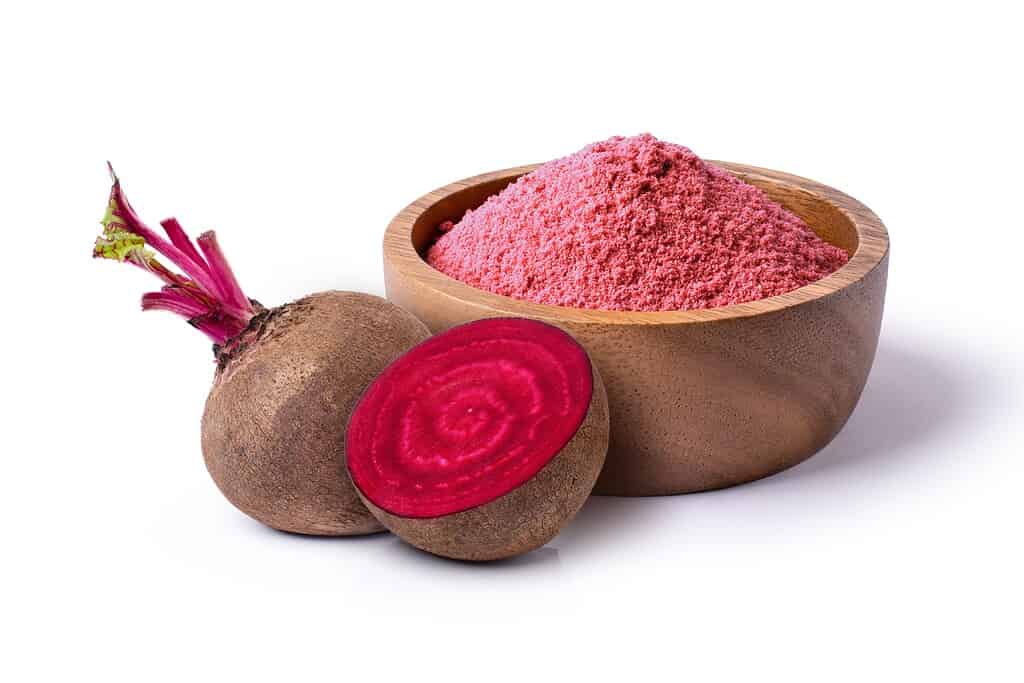
Beet powder is a super nutritious addition to smoothies, juices, and baked goods.
©NIKCOA/Shutterstock.com
Beet Powder Recipe
- Wash and peel 4-5 medium-sized beets.
- Cut the beets into small, even-sized pieces.
- Place the beet pieces on a dehydrator tray or a baking sheet lined with parchment paper.
- Dehydrate the beet pieces in a dehydrator at 125-135°F (50-60°C) for 6-8 hours, or in an oven at the lowest temperature setting for 6-8 hours or until the beets are completely dry.
- Once the beets are completely dry, transfer them to a high-speed blender or a coffee grinder and blend until you get a fine powder.
- Store the beet powder in an airtight container in a cool, dry place.
The photo featured at the top of this post is © Ratikova/Shutterstock.com
Thank you for reading! Have some feedback for us? Contact the AZ Animals editorial team.






